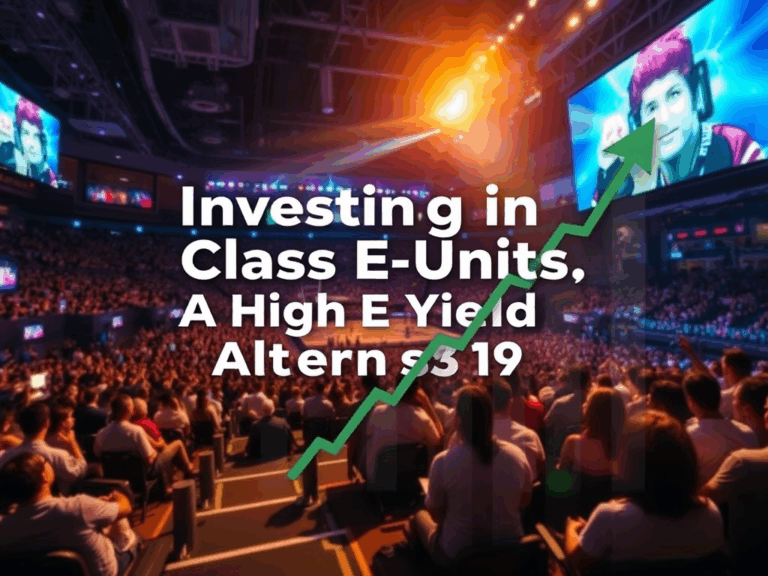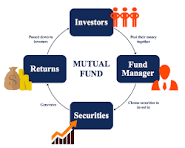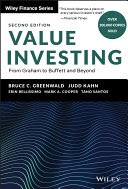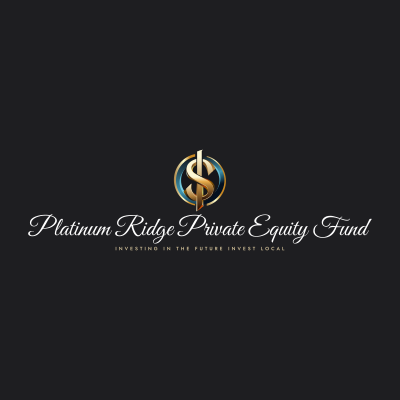"The Platinum Ridge Equity Investment Fund – Investing Where It Matters Most."
"The future of the economy is local."
Where Partnership Meets Performance.
At Platinum Ridge Private Equity Fund, LP, we are more than investors—we are strategic partners committed to long-term value creation. Our mission is to identify high-potential companies, empower exceptional leadership, and unlock growth across key sectors that shape the future of business, commerce, and culture. Learn more
Captive Insurance vs. ObamaCare: A Cost-Effective Alternative
The Affordable Care Act has increased healthcare costs and burdens. A Captive Insurance System offers a viable alternative, reducing expenses, enhancing transparency, and promoting preventive care. This approach encourages local control and community investment, presenting a potential economic uplift. Transitioning to this model could significantly cut federal healthcare costs while improving overall quality.
Read MoreReforming the NASCAR Championship Playoffs
The proposed NASCAR playoff format aims to enhance fairness and recognize consistent excellence while maintaining excitement. Key changes include automatic qualifications for the Regular Season Champion and top winners, structured elimination rounds, and a simplified system that emphasizes performance in every race, ensuring a championship that reflects true driving skill and strategy.
Read MoreDiscipline: The Key to Winning in Football and Investing
Robert Wilson emphasizes that both the New York Giants’ struggles and investors’ failures stem from a lack of discipline. Mistakes cost teams momentum and games, while emotional decisions lead investors astray. Success in both realms relies on executing a defined strategy, strong leadership, and maintaining composure amid challenges for long-term results.
Read MoreLessons from Israel: A Warning for America Today
The narrative draws parallels between Israel’s history and America’s current circumstances, highlighting themes of prosperity, forgetfulness, moral confusion, and division. Just as Israel faced decline due to disobedience, America risks similar downfall without a return to God, urging repentance, rejection of false idols, and restoration of communities for renewal.
Read MoreThe Laws of Nature: A Guide to Inalienable Rights
The phrase “the Laws of Nature and Nature’s God” in the Declaration of Independence reflects a foundational legal and moral framework rooted in classical philosophy, biblical tradition, and Enlightenment thought. This document analyzes its historical origins, philosophical tenets, modern implications for governance, justice, and human rights, highlighting its enduring relevance and challenges.
Read MoreRevamping NASCAR: The Need for Investment Banks
NASCAR faces financial challenges due to rising team costs and shifting sponsorship models. To ensure sustainable growth, it needs to leverage investment banks for institutional capital, financial structuring, and mergers. This shift could help teams secure stable financing, create franchise value, and improve competitive quality while attracting new investors to the sport.
Read MoreComparing Art and Private Equity: Investment Returns Over 20 Years
This white paper evaluates a $100,000 401(k) investment over 20 years, contrasting art with the Platinum Ridge Private Equity Fund. While art offers cultural value with a projected return of $291,776, private equity significantly outperforms with $1,636,654, underscoring its superiority for long-term wealth creation.
Read MoreMaximize Retirement Returns: S&P 500 vs. Private Equity
This white paper analyzes a $100,000 401(k) investment over 20 years, contrasting a full S&P 500 allocation with the Platinum Ridge Private Equity Fund. The results show that the private equity investment could reach approximately $1.64 million, compared to $466,000 for the S&P 500, suggesting significantly enhanced long-term growth potential.
Read MoreWhite Paper
Americans must choose between 401(k)s and Self-Directed IRAs (SDIRAs) for retirement investment. 401(k)s offer employer contributions and regulated oversight, while SDIRAs provide greater investment flexibility with alternative assets. Each has distinct benefits and risks, and a combined strategy may yield optimal results for many investors seeking diversification and tax advantages.
Read MoreMaximize Your 401(k) Contributions on $80K Salary
The white paper illustrates how an individual earning $80,000 annually can positively contribute to a 401(k) while minimizing take-home pay impact. By leveraging pre-tax contributions and employer matches, employees can save effectively. Recommendations include maximizing contributions to capture employer matches and gradually increasing them over time to enhance retirement savings.
Read MoreTop 5 Retirement Plans: Your Guide to Financial Security
Planning for retirement is vital for financial stability in the U.S., with various savings plans available. The top five include 401(k), Traditional IRA, Roth IRA, 403(b), and SEP IRA, each offering distinct tax benefits and contribution limits. Choosing the right plan depends on employment status and financial goals, emphasizing early and consistent contributions.
Read MoreClass F Units vs Corporate Bonds: A Comparative Analysis
The white paper compares Class F Units in real estate with corporate bonds, assessing their return profiles, risks, and liquidity. Class F Units, yielding 8–12%, offer potential income and appreciation but carry moderate risks, while corporate bonds yield 4–6% with lower volatility. A balanced portfolio enhances yields and resilience.
Read MoreInvesting in Class E Units: A High-Yield Alternative
Entertainment properties have emerged as a notable alternative asset class, yielding cash flows through various revenue streams. Class E Units target 12–18% annual returns by focusing on such investments, outperforming the S&P 500’s 8–10%. Despite moderate risks, these units align with the entertainment sector’s growth, offering a strategic investment opportunity.
Read MoreMaximize Returns with AI-Focused Class D Units
Artificial Intelligence is reshaping the economy, creating new markets and enhancing efficiency across sectors. Class D Units offer concentrated exposure to AI technology, aiming for annual returns of 18-25%, significantly surpassing the S&P 500’s 8-10%. Investors must weigh potential risks and volatility against these high returns in their portfolio strategies.
Read MoreClass C Units: A Long-Term Growth Investment
This white paper advocates for Class C Units in Last-Mile Logistics as an investment opportunity for long-term growth. It highlights their potential for durable cash flows and operational advantages, contrasting them with S&P 500 investments. With monthly redemption options and structural alignment to market needs, Class C Units may enhance a diversified portfolio significantly.
Read MoreClass B Units in Wholesale Distribution: Unlocking Growth and Liquidity
Class B Units in private equity, particularly within wholesale distribution, cater to growth-oriented investors willing to take risks for higher returns. They combine strong potential returns (15–20% IRRs) with unique monthly redemption options. This structure provides liquidity not typically seen in private equity, making it an attractive investment choice compared to traditional stocks.
Read MoreClass A Shares: A Secure Investment Model for Conservative Investors
Platinum Ridge Private Equity Fund employs a unique model integrating technology, wholesale distribution, and logistics to create predictable cash flows. By leveraging income from entertainment and real estate, the Fund offers conservative Class A investors stable monthly distributions alongside growth potential, making it a secure investment choice for wealth preservation.
Read MoreUnlocking Profits in Wholesale Distribution and Last-Mile Logistics
The whitepaper outlines the growth potential and investment opportunities in wholesale distribution and last-mile logistics, highlighting their fragmentation and synergy for consolidation. With projected growth rates of 4-10% and attractive IRR for roll-ups, Platinum Ridge and Delphina.Shop aim to leverage technology and community initiatives to enhance efficiency and profitability.
Read MorePrivate Equity vs S&P 500: 20-Year Wealth Comparison
Investing $100,000 over 20 years yields approximately $545,000 in the S&P 500 and $1.64 million in a private equity roll-up strategy. Despite higher fees, private equity outperforms traditional equity by 3x, with monthly liquidity at 90% NAV making it an appealing long-term wealth-building option for investors.
Read MoreMastering Value Investing in Private Equity
Platinum Ridge emphasizes disciplined value investing for private equity success, focusing on acquiring fundamentally strong businesses at attractive prices. Their roll-up strategy aims for economies of scale and lasting market presence. By prioritizing intrinsic value, safety margins, quality, synergy, and long-term growth, they deliver sustainable returns and build efficient businesses for investors and communities.
Read MoreBoost Employee Retention with a Strong 401(k) Plan
Offering a robust 401(k) retirement plan helps attract and retain top talent while ensuring employees’ financial security. The process includes easy company enrollment, straightforward employee onboarding with digital options, and ongoing management support. Key benefits include tax advantages for employers, flexible investment choices, and tax-deferred growth for employees, ensuring a valuable advantage.
Read MoreUnlocking Retirement Wealth with Private Equity in 401(k)s
Many 401(k) plans offer traditional mutual funds, which often underperform for long-term investors. For individuals 55 and under, incorporating private equity offers substantial advantages, such as higher potential returns, effective diversification, active management, and reduced market volatility. Recent regulatory changes now allow younger investors equitable access to these beneficial assets.
Read MorePublic vs Private Equity: A Comprehensive Investor’s Guide
Investors face a pivotal choice. They can place capital in the public stock market, which offers liquidity and transparency. Alternatively, they can commit to private equity, where illiquidity is exchanged for higher potential returns and greater influence. This paper compares both options across performance, risk, control, and suitability, providing clarity for investors seeking balance in their portfolio.
Read MoreMaximize Your 401(k) with a Self-Directed IRA
As retirement approaches, the last decade of a career is crucial for maximizing financial readiness. Rolling over a 401(k) into a Self-Directed IRA (SDIRA) enhances investment choices, control, and potential returns. This strategy mitigates market volatility and aids estate planning, ensuring a secure and prosperous retirement.
Read MoreTariffs: Balancing Protectionism and Economic Growth
Tariffs are viewed positively for protecting jobs, encouraging domestic investment, and enhancing national security while correcting trade imbalances. However, detractors argue they raise consumer prices, provoke retaliation, disrupt supply chains, and ultimately harm economic growth and innovation, resulting in a complex debate over their overall impact.
Read MoreThe Hidden Costs of Tariffs on Consumers
Tariffs, intended to protect domestic industries and jobs, often lead to negative outcomes like higher consumer prices, trade wars, and disrupted supply chains. These consequences can reduce overall economic growth and innovation. While they may provide temporary relief, long-term solutions favoring free trade and investment policies are essential for sustained competitiveness and prosperity.
Read MoreThe Impact of Tariffs on American Jobs and Economy
Tariffs are taxes on imports that spark debate over their economic impact. Critics claim they distort markets and raise prices, while supporters argue they protect jobs, encourage domestic investments, bolster national security, correct trade imbalances, and promote fair practices. Strategically applied, tariffs can strengthen the U.S. economy and secure industries.
Read MoreUnderstanding Gold: Investment or Insurance?
Gold is debated as an investment. Critics point to its lack of cash flow, intrinsic productivity, and compounding growth. Supporters highlight its wealth preservation, diversification benefits, appreciation potential, and role as a crisis hedge. Ultimately, gold is seen as insurance rather than a primary asset for wealth building.
Read MoreThe Investment Power of Gold: A Safeguard for Your Wealth
Gold has been a symbol of wealth and stability for centuries, serving as an investment by preserving purchasing power, diversifying portfolios, and showing resilience during crises. Though it produces no income, gold’s historical appreciation, global demand, and modern financial innovations affirm its value as a legitimate asset that complements other investments.
Read MoreWhy Gold is Not a True Investment: Key Insights
Gold has fascinated civilizations for thousands of years. It has been used as currency, treasured as jewelry, and hoarded by empires as a symbol of wealth and security. In the modern age, gold is often touted as a “safe haven” for investors during times of economic uncertainty. Yet, when viewed through the lens of true investment fundamentals, gold falls short. It is not an investment—it is, at best, a store of value or a form of insurance.
Read MoreThe Importance of Free Cash Flow in Business Valuation
One number often stands out when evaluating the health of a business. It is considered a true measure of financial strength: free cash flow (FCF). While earnings and revenue get a lot of attention, free cash flow provides even more crucial information. It shows how much actual cash is left over after a company pays its bills and invests in its operations.
Read MoreHow Small Businesses Strengthen Communities and Economies
Why We Must level The Plying Field In every thriving community, there is a common thread that ties neighbors together. That fuels local pride, and keeps money circulating close to home — small businesses. The corner coffee shop knows your order before you walk in. The family-owned hardware store has been there for generations. Small […]
Read MoreRevitalizing Small-Town America:
A Marketplace Solution to Spark Local Economic Growth and Compete with Big Retail Across the United States, the heartbeat of small-town America is fading. Once-bustling Main Streets are now lined with empty storefronts. Many family-owned businesses, legacies passed down through generations, are forced to close their doors. These aren’t just places of commerce; they are […]
Read MoreTrump’s Executive Order: New 401(k) Options for Investors
Why Serious Investors Are Paying Attention:
• Outperformance: Historically, private equity has delivered returns 2–4x higher than public equity benchmarks over long time horizons.
• Diversification: With volatility in public markets, allocating a portion of your retirement to private deals creates a hedge and stabilizes performance.
• Access to Innovation: From emerging tech to mid-market rollups, PE offers exposure to businesses before they go public (or never do).
AI-Driven Wholesale & Retail Platform for Small Businesses
This platform merges AI, wholesale efficiency, and hyper-local retail success into a scalable ecosystem. By automating inventory, marketing, logistics, and demographic targeting, it ensures high profitability for both the platform and its users. Retailers gain an easy entry into eCommerce with powerful AI support, while wholesalers access a ready market through built-in incentives and tools.
Read MorePlatinum Ridge: Strategic Portfolio Development Guide
Below is a detailed blueprint outlining how Platinum Ridge Private Equity Fund, L.P. strategically develops its portfolio business model and generates profit through its targeted corporate acquisitions. This framework highlights the Fund’s approach to value creation, operational integration, and long-term equity growth across multiple sectors. Each acquisition is aligned with a master business model designed to increase efficiency, scale operations, and deliver consistent returns to investors.
Read MoreMastering Investing: Focus Beyond Market Noise
Benjamin Graham famously said, “In the short run, the market is a voting machine but in the long run, it is a weighing machine.” That means that daily prices are mostly noise—driven by emotion, herd behavior, headlines, and speculation. True investing, on the other hand, is about patiently weighing the value of assets and waiting for returns to play out over time.
When you invest properly, you’re not chasing what the market thinks is hot today. You’re assessing what assets are fundamentally worth, how much cash flow they generate, and what their future prospects are.
Why Redemptions Are Processed at 90% of Current Fund Value
Investing in a private equity fund offers the potential for outsized returns, access to exclusive opportunities, and strategic diversification. However, it also comes with a unique set of structures and limitations designed to protect both the fund and its investors. One such feature is the policy of processing redemptions at 90% of the fund’s current net asset value (NAV) at the time of redemption.
At first glance, this might seem like a penalty or a disadvantage—but in reality, it serves several vital purposes. Here’s why this approach is in place and how it benefits long-term investors in funds like Platinum Ridge Private Equity Fund, L.P.:
Why Private Equity Investing Is the Ultimate Millionaire MakerIts about the Model and Control of the Investment
In the past, private equity was reserved for institutions and ultra-rich individuals. Today, it’s becoming more accessible to accredited investors through platforms like feeder funds, crowdfunding sites, and boutique private investment firms.
While private equity is still less liquid and more complex than traditional investments, it offers the potential for far greater returns—especially for those willing to take a longer-term, more active approach.
In an era of market volatility and low-yield savings, private equity stands out as a compelling strategy for serious wealth creation. It’s not just about buying companies—it’s about transforming them. And when that transformation succeeds, it creates far more than profits—it creates millionaires.
Why Private Equity in Retirement Accounts
Private equity refers to investments made directly into private companies—or in the buyouts of public companies that are then delisted—typically through structured funds or direct ownership. These investments often aim to improve operational efficiency, strategic direction, and profitability before exiting via sale or IPO.
Private equity investments are typically illiquid and have longer holding periods (often 7–10 years), but historically, they have delivered above-average returns compared to public markets
Understanding Free Cash Flow: The Key Indicator of Business Health
When evaluating the health of a business, one number often stands out. It is a true measure of financial strength: free cash flow (FCF). While earnings and revenue get a lot of attention, free cash flow reveals something even more critical. It shows how much actual cash a company has left over after paying its […]
Read MoreWhy Platinum Ridge Private Equity Funded Was Formed Restoring Main Street, Redefining Private Equity
In a financial world dominated by institutional investors and Wall Street elites, Platinum Ridge Private Equity Funded was formed with a clear and powerful purpose: to reimagine private equity as a tool for revitalizing local economies, empowering small investors, and bringing common-sense discipline back to deal-making.
At the heart of Platinum Ridge is a founder whose journey is anything but typical. With a career spanning over four decades, his diverse background uniquely positions him to lead a private equity revolution that challenges outdated norms and embraces innovation with integrity
Understanding Bid and Ask Prices in Stocks
When you look at a stock quote, you’ll often see two important numbers. They are side-by-side: the bid price and the ask price. These numbers are more than just figures on a screen.
Read MoreWhy Investors Should Partner with Robert Wilson and Platinum Ridge Private Equity Fund
In today’s competitive and often unpredictable investment environment, choosing the right partner is more critical than ever. Investors seeking a combination of strategic insight, proven leadership, and disciplined risk management need look no further than Robert Wilson and the Platinum Ridge Private Equity Fund. Backed by a track record of excellence and a forward-thinking investment strategy, this partnership represents a unique opportunity to achieve strong, sustainable returns.
Read MoreWhy Investors Must Wait One Year to Redeem Their Investment in Platinum Ridge Private Equity Fund, L.P.
Private equity is fundamentally different from traditional public market investing. It involves long-term capital commitments, illiquid assets, and strategic investment horizons designed to unlock value over time. For investors in Platinum Ridge Private Equity Fund, L.P., the one-year minimum holding period before redemption is not a restriction—it’s a critical feature that aligns with the Fund’s long-term value creation strategy, investor protection, and operational efficiency.
Here’s why the one-year redemption lock-up is in the best interest of both the investor and the Fund:
Why a Self-Directed IRA Is the Best Retirement Vehicle for Savvy Investors
When it comes to planning for retirement, most Americans are familiar with traditional IRAs and 401(k)s, which typically offer a narrow range of investment options—mainly stocks, bonds, and mutual funds. But for those looking to take control of their financial future, expand their investment horizon, and unlock real diversification, a Self-Directed IRA (SDIRA) stands out as one of the most powerful retirement vehicles available.
Here’s why a Self-Directed IRA may be the best option for growing and protecting your retirement wealth:
Why a Diversified Private Equity Portfolio Is in the Best Interest of the Investor
Private equity has long been considered one of the most lucrative and dynamic investment strategies available. By allowing investors to tap into privately held companies with high growth potential, private equity offers access to returns often unavailable through public markets. But while the opportunities are substantial, so are the risks. That’s why diversification within a private equity portfolio isn’t just a recommendation—it’s a necessity for any prudent investor.
Read MoreCombatting Veteran Homelessness: Join Tunnel to Towers
The Fight Tunnel to Towers Leads Veteran homelessness remains an urgent crisis in the United States. Although veterans account for roughly 7% of the adult population, over 11% of those experiencing homelessness are veterans. This reflects unique risk factors like mental health challenges, PTSD, and economic hardship. To combat this, the Tunnel to Towers Foundation […]
Read More🔥 Up to 62% Off Calvin Klein Jeans — Plus 10% to Help End Veteran Homelessness In the US
Up to 62% Off Calvin Klein Jeans + 10% Donated to Veterans in Need
For a limited time, get up to 62% off your favorite Calvin Klein jeans — timeless American style with modern comfort.
Even better? 10% of every sale supports Tunnels to Towers Foundation, working to end veteran homelessness and provide housing to our nation’s heroes.
What Is Asset Management?
In the world of finance, the term asset management is often tossed around in boardrooms, investment reports, and wealth planning conversations. But what does it actually mean? And how does it work?
Read MoreWhat Is an Option?
In the world of investing, few tools offer as much flexibility—and complexity—as options. Options can help investors hedge risk, generate income, or speculate on price movements, all with relatively small amounts of capital. But before using them, it’s essential to understand what options are, how they work, and what risks they carry.
Read MoreWhat Is an Investment?
In the world of finance and wealth-building, the word investment is used often—but what exactly does it mean?
At its core, an investment is the act of putting money, time, or resources into something with the expectation of generating a future return or benefit. While that sounds simple, investments can take many forms, each with varying levels of risk and reward.
What Is a Self-Directed IRA?
A Self-Directed IRA (SDIRA) is a type of Individual Retirement Account that offers investors significantly more control over their investment choices than traditional or Roth IRAs. While the core tax benefits remain the same—tax-deferred growth or tax-free withdrawals, depending on the account type—the defining feature of a Self-Directed IRA is expanded investment flexibility.
Read MoreValue Investing: A Beginner’s Guide to Building Long-Term Wealth The Only Theory that has Worked Over the Last 70 years
If you’re new to investing and looking for a strategy that focuses on long-term success rather than chasing short-term gains, value investing might be exactly what you need. Made famous by legendary investors like Benjamin Graham and Warren Buffett, value investing is a time-tested approach that emphasizes patience, discipline, and buying stocks at a discount to their intrinsic value.
Read MoreTitle: Private Equity vs. the S&P 500: A Decade of Diverging Growth and Risk-Adjusted Returns
Over the last decade, private equity has evolved from a niche asset class to a dominant force in global investing, reshaping industries, driving innovation, and attracting unprecedented capital inflows. While the S&P 500 remains a benchmark for public market performance, private equity has increasingly become the go-to for institutional investors and high-net-worth individuals seeking higher returns, albeit with different risk profiles and liquidity constraints. Now due to an executive order by President Trump the working class can share in the profits through their IRA and 401K’s.
Read MoreWhy Buying from Outside Your Country Is More Inflationary Than Tariffs
Tariffs are not the enemy of the consumer — dependency is. While tariffs may increase specific prices in the short term, they work to anchor price stability by rebuilding domestic production, reducing external vulnerabilities, and keeping value inside the national economy.
By contrast, unfettered importation drains wealth, hollows out industries, and leaves economies vulnerable to foreign shocks — all of which are far more inflationary in the long run.
In truth, the real cause of modern inflation isn’t tariffs. It’s the loss of economic sovereignty — and the answer lies in rebuilding it. Reinvesting in domestic manufacturing, supporting local producers, and enacting smart, protective trade policies will not only lower inflation over time — it will restore prosperity where it belongs: at home.
Private Equity Fund vs. Mutual Fund: Understanding the Key Differences
When it comes to investing, two prominent vehicles often discussed are Private Equity (PE) funds and Mutual Funds. While both pool money from investors to invest in various assets, they operate in fundamentally different ways, cater to different investors, and offer very different risk-reward profiles.
Read More💼 How You Can Invest in Private Equity for Just $584/Month Using a Self-Directed IRA Higher Returns Mean Better Retirement
Private equity used to be reserved for the ultra-wealthy. Not anymore.
Thanks to Self-Directed IRAs (SDIRAs) or 401k, everyday investors can now access private equity opportunities with as little as $584 per month—all while enjoying tax-advantaged growth.
💡 What Is an Investment?
An investment isn’t just about money—it’s about putting something of value to work with the goal of getting more in return later.
Whether you’re investing capital, time, or effort, the key idea is the same: today’s sacrifice for tomorrow’s gain.
Valuing a Business Using a Multiple of EBITDA
Using a multiple of EBITDA to value a business is a useful, industry-standard tool. While it doesn’t tell the whole story, it’s a strong starting point that captures the essence of operational performance. It’s important to combine this method with other valuation techniques (like discounted cash flow or asset-based valuation) and factor in qualitative aspects such as management strength, competitive landscape, and customer loyalty.
When done correctly, EBITDA multiples can provide both buyers and sellers with a clear and credible estimate of what a business is truly worth.
Understanding the Financial Theory of Corporate Value
The financial theory of corporate value remains a cornerstone of modern finance. It provides a structured, rational framework for valuing companies, making investment decisions, and measuring strategic success. Though it must evolve to account for intangibles and sustainability, its core message is clear: a company is worth the cash it can generate—discounted for time and risk. Mastering this theory is essential for anyone looking to lead, invest in, or evaluate a business in today’s economy.
Read More✅ The 2025 Mid-Year Investment Scorecard
As we reach mid-2025, a few clear winners are emerging across the financial markets. From Bitcoin’s surge to private equity’s steady climb, investors are navigating a world shaped by AI innovation, rate stabilization, and global uncertainty.
Read MoreWhy Economic Policy Only Works When It’s Community by Community
Across decades of political cycles, both the left and right have championed sweeping economic reforms promising to lift wages, expand opportunity, and drive national prosperity. But while headlines tout job creation or GDP growth, too many communities across America continue to fall behind. Why? Because economic policy, no matter how well-intentioned, fails when it ignores the basic truth that economies are local.
Read MoreWhy a Captive Insurance Company is Better than Social Security and Medicare for the American People
Creation of a Higher Standard of Living for the Same Cost to Taxpayers with Economic Impact Sincerely Robert Wilson 631-819-8252
Read MoreInvesting Made Easy: Buying the Whole Fund or Targeting an Industry Within It
In the modern investment landscape, flexibility and precision are key. One of the most powerful yet underappreciated tools available to investors today is the ability to either purchase an entire fund or selectively invest in specific industries represented within that fund. This flexibility empowers investors to tailor their portfolios to match their goals, values, or market outlook—without sacrificing diversification or control.
Read MoreAt What Age Should You Reconsider Investing Your Self-Directed IRA in Private Equity?
Age Matters Self-directed IRAs (SDIRAs) offer investors access to a broader range of alternative assets—including real estate, commodities, cryptocurrencies, and private equity. Among these, private equity can be particularly enticing due to its potential for outsized returns. However, private equity is also illiquid, high-risk, and long-term in nature. That raises an important question: at what […]
Read More💼 Private Equity in Your 401(k)?
Trump’s executive order just opened a door previously closed to most retirement investors. Here’s how to take advantage.
Read More“Unlock Private Equity in Your Retirement Portfolio”
Trump’s executive order just opened a door previously closed to most retirement investors. Here’s how to take advantage
Read MoreWholesale-to-Retail Industry Report – 2025
The wholesale-to-retail industry is undergoing a dramatic shift from analog bulk trading to data-driven, digitally connected, and customer-focused ecosystems. Wholesalers that embrace digital platforms, sustainable practices, and value-added services will thrive. Retailers that forge strategic partnerships and demand efficiency, transparency, and speed will drive innovation. As the lines blur between wholesaler, marketplace, and retailer, adaptability will be the new competitive edge.
Read MoreU.S. Manufacturing Industry Report – 2025
The U.S. manufacturing industry is entering a new era—defined by innovation, resilience, and strategic autonomy. While the sector faces persistent challenges related to labor, cost, and global competition, it also benefits from favorable policy tailwinds, advancing technology, and shifting global dynamics. With continued investment in talent, infrastructure, and digital capability, the U.S. can reclaim and expand its position as a global manufacturing powerhouse.
Read MoreWholesale-to-Retail Industry Report – 2025
The wholesale-to-retail industry is undergoing a dramatic shift from analog bulk trading to data-driven, digitally connected, and customer-focused ecosystems. Wholesalers that embrace digital platforms, sustainable practices, and value-added services will thrive. Retailers that forge strategic partnerships and demand efficiency, transparency, and speed will drive innovation. As the lines blur between wholesaler, marketplace, and retailer, adaptability will be the new competitive edge.
Read MoreU.S. Manufacturing Industry Report – 2025
The U.S. manufacturing industry is entering a new era—defined by innovation, resilience, and strategic autonomy. While the sector faces persistent challenges related to labor, cost, and global competition, it also benefits from favorable policy tailwinds, advancing technology, and shifting global dynamics. With continued investment in talent, infrastructure, and digital capability, the U.S. can reclaim and expand its position as a global manufacturing powerhouse.
Read MoreTop Performing Asset Classes: What Investors Need to Know in 2025
2025 continues to reward those positioned in disruptive innovation, digital assets, and high-yield private markets. However, traditional havens like real estate and gold still offer stability in uncertain times.
The top takeaway: diversification remains key, but understanding each asset class’s macro context is more critical than ever.
The Future of Tech: Innovations and Regulations in 2025
Executive SummaryAs we approach the year 2025, understanding the landscape of Technology Investing 2025 will be crucial for stakeholders looking to navigate the evolving digital economy. The technology industry continues to be a global powerhouse, driving innovation, shaping economies, and transforming how societies operate. As of 2025, the industry is defined by rapid advancements in […]
Read MoreUnlocking Private Equity Gains in Smart TV Channels
A New Frontier for Private Equity Returns In the evolving landscape of digital media, Smart TV channels—also known as FAST (Free Ad-Supported Television) channels—have emerged as one of the most promising and underpenetrated growth markets. As the streaming wars plateau and consumers shift from expensive subscriptions to free, ad-supported content, Smart TV channels offer a […]
Read More💼 Daily Investor Insights & Education — Delivered Straight to Your Inbox
Free daily Investor education and insight just register through contact form
Read MorePrivate Equity Returns on Entertainment Complexes: A New Frontier of Growth and Risk
Private equity returns on entertainment complexes are promising but nuanced. The right investments—backed by strong management, brand loyalty, innovative experiences, and savvy real estate strategies—can yield outstanding returns. However, the space remains operationally intensive and sensitive to consumer behavior shifts.
As the economy continues to evolve, so too will the playbook for success in this dynamic and exciting sector.
Last-Mile Logistics Industry Report – 2025
Executive Summary
The last-mile logistics industry—responsible for the final leg of delivery from distribution centers to end consumers—has emerged as a critical and competitive component of the global supply chain. Driven by the explosive growth of e-commerce, consumer demand for fast and flexible delivery, and urban population density, last-mile logistics is now a $200+ billion global market. In 2025, the sector is undergoing transformation through automation, AI, electric vehicles (EVs), and alternative delivery models such as lockers, drones, and crowdsourcing. Yet, rising costs, environmental concerns, and labor shortages continue to challenge scalability and profitability.
1. Industry Overview
1.1 Market Size & Growth
• Global last-mile delivery market (2025): $212 billion
• CAGR (2020–2025): 9.3%
• Key sectors served: E-commerce, grocery, pharmaceuticals, food delivery, retail, B2B parcels
1.2 Key Players
• Global Integrators: FedEx, UPS, DHL, Amazon Logistics
• Gig/Crowdsourced Platforms: DoorDash, Uber, Instacart, Gopuff
• Retail/E-tail Entrants: Walmart, Target, JD Logistics, Alibaba Cainiao
• Tech & Automation Firms: Starship Technologies, Nuro, Zipline, Gatik
2. Key Trends in 2025
2.1 Ultra-Fast Delivery and Hyperlocal Fulfillment
• Consumer expectations have shifted to same-day or sub-hour delivery, especially in dense urban markets.
• Retailers are investing in micro-fulfillment centers (MFCs) within cities to shorten delivery times.
2.2 Electrification and Sustainability
• Regulatory and ESG pressures are pushing fleets to transition to electric vehicles (EVs).
• Urban delivery zones in Europe and Asia now often mandate zero-emission vehicles.
2.3 AI & Predictive Routing
• AI and machine learning tools are optimizing delivery route planning, traffic prediction, and dynamic re-routing.
• Predictive analytics is being used to anticipate demand surges and pre-position inventory.
2.4 Autonomous Delivery
• Autonomous vehicles, drones, and sidewalk bots are piloting in niche environments, such as campuses, gated communities, and hospitals.
• Regulatory adoption remains a hurdle, though Zipline, Nuro, and Starship have made progress.
2.5 Consolidated Delivery & Parcel Lockers
• To reduce costs and emissions, companies are adopting bundle delivery models, drop boxes, and smart locker networks (e.g., Amazon Lockers, InPost).
• Consumers increasingly opt for convenience pickup over home delivery for returns and security.
3. Industry Challenges
3.1 High Cost Per Delivery
• Last-mile accounts for 53% of total shipping cost in e-commerce logistics.
• High failed delivery rates, tight delivery windows, and low drop densities add to cost pressures.
3.2 Labor Shortages and Gig Worker Tensions
• Dependence on contract drivers raises issues around availability, turnover, and legal classification (employee vs. contractor).
• In 2024–25, several jurisdictions introduced new protections and minimum wage standards for gig workers.
3.3 Urban Congestion and Regulation
• Congestion pricing, curb access limits, and urban delivery zoning are reshaping urban logistics strategies.
• City partnerships with logistics providers (e.g., urban consolidation centers) are expanding.
3.4 Returns Management
• Reverse logistics—especially for fashion and electronics—remains costly and inefficient.
• Companies are deploying smart packaging, dynamic returns policies, and AI to reduce return volumes.
4. Innovations & Emerging Models
4.1 Crowdsourced Delivery
• Crowdsourced and gig models offer flexibility and scalability, especially for peak periods.
• Key challenge: quality control and brand consistency in customer experience.
4.2 Drones & Autonomous Vehicles
• Companies like Zipline (drones), Nuro (autonomous vans), and Starship (delivery robots) are testing new models.
• Best suited for rural areas, controlled environments, or light parcels.
4.3 Micro-Fulfillment & Dark Stores
• Retailers are creating dark stores (non-customer-facing) and micro warehouses to handle hyperlocal demand.
• Automation within these centers reduces picking time and accelerates delivery readiness.
4.4 AI-Powered Customer Communication
• Real-time tracking, automated SMS updates, and estimated arrival windows enhance delivery transparency.
• AI chatbots and IVR systems are managing last-mile customer service more efficiently.
5. Regional Snapshots
North America
• Dominated by Amazon Logistics, UPS, FedEx, and emerging gig players.
• Strong push toward EV adoption and labor reform in large cities.
Europe
• Urban regulation is more advanced (e.g., Low-Emission Zones), promoting cargo bikes, EVs, and lockers.
• Major investments in postal infrastructure modernization.
Asia-Pacific
• Leaders in super app delivery integration (e.g., Meituan, Grab).
• Rapid adoption of robotics and drone delivery, especially in China and Japan.
Latin America & Africa
• Infrastructure challenges remain, but mobile penetration enables creative last-mile workarounds.
• Growth in cash-on-delivery models and motorbike courier services.
6. Outlook and Opportunities (2025–2030)
Growth Drivers
• Rising global e-commerce penetration
• Smart city initiatives and urban logistics partnerships
• Retailer investment in own delivery networks
• Advances in AI, robotics, and EV charging infrastructure
Projected Trends
• Autonomous delivery will grow from pilots to partial deployment.
• Sustainability mandates will pressure fleets to be carbon-neutral.
• Subscription models (e.g., Amazon Prime, Walmart+) will lock in customers via free and fast delivery perks.
• Data integration across platforms will enable more efficient multi-vendor logistics ecosystems.
Conclusion
The last-mile logistics industry is navigating a high-growth yet high-cost environment, where innovation is the only path to scalability and sustainability. Companies that leverage automation, AI, and electrification—while adapting to urban policies and consumer expectations—will be best positioned to lead. The future of last-mile delivery lies in speed, flexibility, sustainability, and seamless customer experience.
Hamptons Real Estate Industry Report – 2025
The Hamptons real estate market remains one of the most sought-after and exclusive markets in the U.S. Despite macroeconomic pressures, its unique blend of prestige, natural beauty, and lifestyle keeps demand strong. In 2025, success for buyers, sellers, and investors hinges on understanding local regulations, identifying value beyond the obvious, and adapting to shifting lifestyle and climate expectations.
Read MoreHamptons Real Estate Development in 2025: Slowing Pace, Shifting Priorities
Hamptons real estate development in 2025 is no longer about scale and speed—it’s about strategy, sustainability, and sensitivity to the evolving luxury buyer. While the days of pandemic-fueled expansion are behind us, opportunity remains for those who play the long game and build with purpose.
Read MoreEntertainment Industry Report – 2025
The entertainment industry in 2025 is in the midst of a digital and creative transformation. While traditional formats retain value, the real growth lies in interactivity, personalization, and global IP expansion. To stay competitive, companies must balance innovation with integrity, scale with sustainability, and content volume with quality. As audiences gain more power and choice, those who listen—and adapt—will lead.
Read MoreThe Fundamentals of a Business’s Performance: What Really Drives Success
When people think about a business’s performance, they often focus on revenue numbers, stock prices, or viral marketing campaigns. But those are surface-level indicators. The true performance of a business—its ability to grow, generate profit, and create long-term value—comes down to a few core fundamentals. Whether you’re an investor, an entrepreneur, or a stakeholder, understanding these drivers is essential for making sound decisions.
Read MoreHow You Can Invest in Private Equity for Just $584/Month Using a Self-Directed IRA
Private equity investing was once the domain of the ultra-wealthy and institutional investors. With million-dollar minimums and limited access, it was out of reach for everyday Americans. But that landscape has changed—and today, you can start investing in private equity for as little as $584 per month by using a Self-Directed IRA (SDIRA).
Read MoreHow to Invest in Your Company’s 401(k) and Roll It Into a Self-Directed IRA for Greater Control and Growth
For investors who want greater control, broader diversification, and access to alternative investments, the solution is to roll your 401(k) into a Self-Directed IRA (SDIRA). This strategy allows you to preserve the tax benefits of your retirement savings while unlocking new opportunities in real estate, private equity, gold, cryptocurrency, and more.
Read MoreTitle: Decoding the Decade: Average 10-Year Private Equity Returns by Sector
As the next decade unfolds, sectors like AI-enhanced logistics, sustainable manufacturing, immersive entertainment, and smart real estate may drive the next wave of outsized returns—positioning diversified PE funds as a powerful vehicle for long-term wealth creation.
Read MoreInside the Platinum Ridge Private Equity Fund Business Plan: A Modern Blueprint for Building a Competitive National Conglomerate
Platinum Ridge Private Equity Fund, L.P. was created with a bold and highly strategic mission: to build a vertically integrated, technology-enabled wholesale and retail ecosystem that empowers small businesses to compete head-to-head with big-box retailers and eCommerce giants. Anchored in value investing principles made famous by Benjamin Graham and Warren Buffett, the fund’s portfolio construction […]
Read MoreExplore Your Investment Options: Portfolio Offerings Within Platinum Ridge Private Equity Fund, LP
At Platinum Ridge Private Equity Fund, LP, we understand that no two investors are the same—which is why we offer a range of portfolio options tailored to meet varying financial goals, risk tolerances, and life stages. Whether you’re seeking steady monthly income or long-term capital appreciation, our portfolios are built on time-tested value investing principles, […]
Read MoreValue Investing: A Beginner’s Guide to Building Long-Term Wealth
If you’re new to investing and looking for a strategy that focuses on long-term success rather than chasing short-term gains, value investing might be exactly what you need. Made famous by legendary investors like Benjamin Graham and Warren Buffett, value investing is a time-tested approach that emphasizes patience, discipline, and buying stocks at a discount to their intrinsic value.
Here’s a straightforward look at value investing for novices—what it is, how it works, and how to get started.
Read MoreThe Fundamentals of a Business’s Performance: What Really Drives Success
When people think about a business’s performance, they often focus on revenue numbers, stock prices, or viral marketing campaigns. But those are surface-level indicators. The true performance of a business—its ability to grow, generate profit, and create long-term value—comes down to a few core fundamentals. Whether you’re an investor, an entrepreneur, or a stakeholder, understanding these drivers is essential for making sound decisions.
Read MorePrivate Equity Fund vs. Mutual Fund: Understanding the Key Differences
When it comes to investing, two prominent vehicles often discussed are Private Equity (PE) funds and Mutual Funds. While both pool money from investors to invest in various assets, they function in fundamentally different ways. They cater to different investors. They also offer very different risk-reward profiles. 1. Structure and Accessibility Mutual Fund: Private Equity […]
Read More🔍 What Really Drives Corporate Value? A Financial Perspective
In the world of business and investing, understanding what a company is truly worth is essential. Whether you’re a founder, executive, investor, or advisor, the financial theory of corporate value is a concept you can’t afford to ignore. Here’s a quick breakdown of what drives corporate value—and why it matters. 💰 Corporate Value = Present […]
Read MoreHow to Construct a Proper Private Equity Portfolio: A Strategic Framework
In private equity, success doesn’t come from random selections or chasing the hottest trend—it comes from discipline, structure, and strategic integration. Constructing a proper private equity portfolio requires aligning every investment with a central business model that all portfolio companies can complement, support, or grow with. The goal is not just to acquire companies, but […]
Read MoreAbout Platinum Ridge Private Equity Fund, L.P.
Platinum Ridge Private Equity Fund, L.P. is a private investment fund designed to help retirement savers and their financial advisors access the long-term benefits of private equity, without the traditional barriers. Structured like an open-ended mutual fund, Platinum Ridge allows investors to diversify their retirement portfolios by investing in private businesses and assets that are […]
Read More





























































